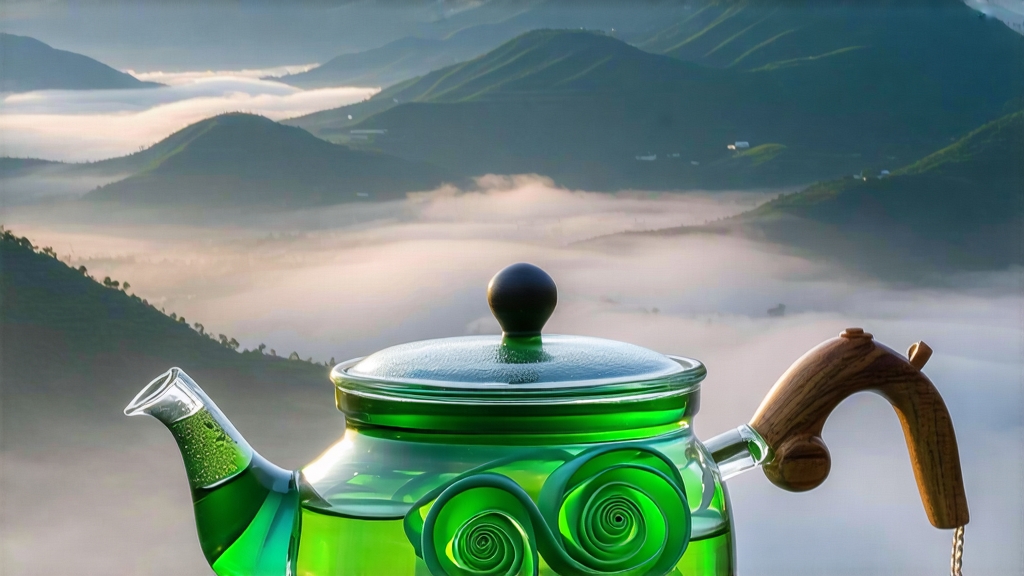
Tucked between the mist-laden peaks of Lake Tai in Jiangsu Province, Biluochun—literally “Green Snail Spring”—is one of China’s most celebrated green teas, yet it remains a quiet mystery to many outside the Middle Kingdom. Its tiny, spiral-shaped leaves release an arresting perfume that marries the sweetness of ripe peach with the creaminess of roasted chestnut, a sensory paradox that has seduced emperors, poets, and modern tea judges for over three centuries. To understand Biluochun is to step into a microclimate where terroir, history, and human artistry converge in every silken sip.
Historical whispers place the tea’s birth during the late Ming dynasty, when a tea-picking girl, her basket full, tucked fresh shoots between her breasts to free her hands. Body heat gently withered the leaves, releasing an intoxicating fragrance that startled passing monks; the serendipitous discovery led to deliberate gentle bruising and low-temperature pan-firing. By the Kangxi era (1662–1722) the imperial court had renamed the tea from “Xia Sha Ren Xiang” (“scary fragrance”) to the more elegant “Biluochun,” referencing its snail-shell shape and the green jade color that glowed against white porcelain. The Qianlong Emperor’s famed southern tours cemented its fame; records show 38 catties reserved exclusively for the palace each spring, couriered north along the Grand Canal under armed escort.
Today the appellation “Biluochun” is legally restricted to leaves harvested within a 12-km radius of Dongting’s East and West mountains, a UNESCO-protected micro-zone where acidic sandy loam, 80 % relative humidity, and daily lake fog slow photosynthesis, concentrating amino acids and fragrant volatiles. Within this zone two lineages dominate: the heirloom “Xiao Ye” (small-leaf) cultivar that delivers the classical orchid-and-apricot nuance, and the hardier “Da Ye” (large-leaf) clone developed in the 1970s to resist spring frost, yielding a bolder, slightly tannic cup prized by northern Chinese markets. Purists insist only the Xiao Ye picked before the Qingming festival (early April) deserves the top-grade “Te Ji” designation, when each bud still wears a silvery down and measures under 1.5 cm.
Crafting Biluochun is a race against dawn. Pickers ascend the terraces at 5 a.m. while dew beads keep the leaves pliable; the standard is one tender bud plus the adjacent unfolding leaf, snapped with a downward tug that avoids the woody stem. Within thirty minutes the harvest is carried to shaded withering troughs where it is spread 2 cm thick and ventilated for 90 minutes, reducing moisture to 68 % and initiating grassy-to-floral enzymatic conversion. The critical “sha qing” (kill-green) step follows: leaves are hand-tossed onto a cast-iron wok pre-heated to 180 °C, then rapidly agitated for three minutes. The tea master’s bare palm reads the leaf temperature, adjusting wrist motion from vigorous flicking to gentle pressing; this coaxes the first curl while locking in chlorophyll’s emerald glow. Temperature is then dropped to 80 °C for a 20-minute “cuo tuan” rolling phase—think of kneading short-crust while simultaneously shaking a sieve. Micro-droplets of sap escape, bonding with surface fuzz to form the signature tight spirals. Finally, a low 60 °C bake for 40 minutes dries the leaf to 5 % moisture, after which it is rested on bamboo trays for “hui guo” (returning fragrance), a 24-hour conditioning that equalizes internal and external aromatics.
Western drinkers often brew green tea with boiling water and a metallic infuser, then lament bitterness. Biluochun demands reverence. Start with a clear 250 ml glass or a porcelain gaiwan so the unfolding choreography can be observed. Weigh 3 g of leaf—about 120 buds—into the pre-warmed vessel, then add 200 ml of water cooled to 70 °C. The first infusion, 60 seconds, releases a pale celadon liquor with a top note of fresh lychee and a whisper of milk. Inhale with mouth slightly open; the retronasal passage amplifies the tea’s lactone compounds,